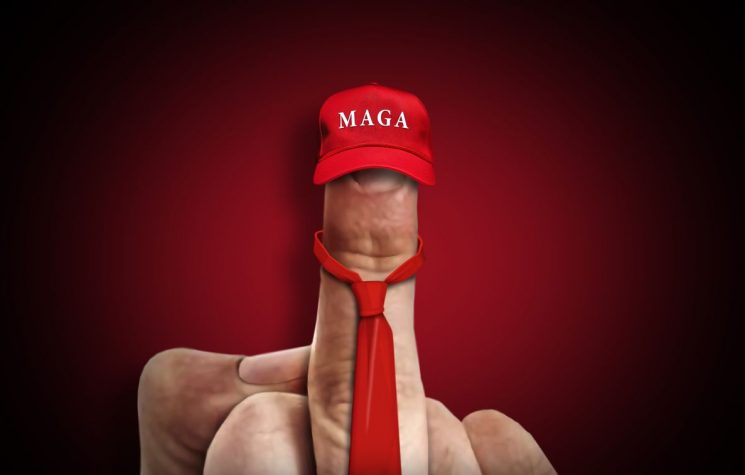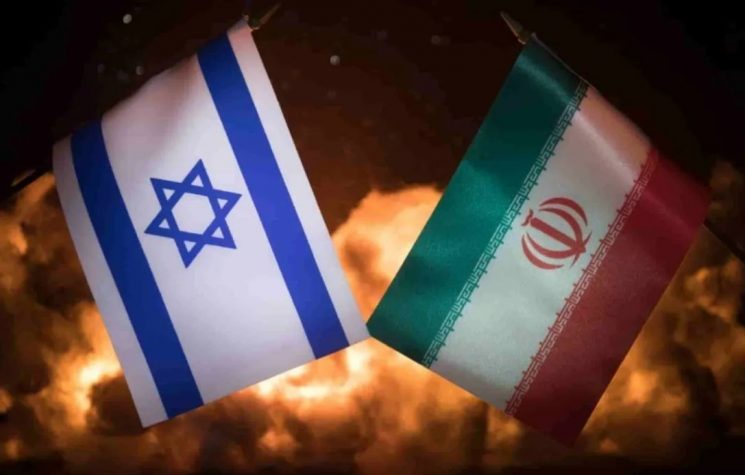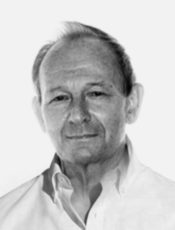Netanyahu is in the midst of ‘a campaign’. It’s not an election campaign, because he has no real chance of surviving an election.
❗️Join us on Telegram![]() , Twitter
, Twitter![]() , and VK
, and VK![]() .
.
Contact us: info@strategic-culture.su
In a small dimly lit room in Gaza, it was possible to discern first the museum-piece wheel chair, and then the crumpled, blanketed figure of the paraplegic figure who occupied it. Suddenly a high-pitched squeal seemed to emit from the wheelchair; it’s occupant’s hearing aid had gone wild, and was to continue to shriek at regular intervals during my visit. I wondered how much the chair-occupant could hear, with such a mal-adjusted ear-piece.
Settled into discussion, I realised that disabled or not, his mental state was sharper than a knife. He was as tough as nails; had a dry humour and his eyes perpetually sparkled. He was clearly enjoying himself – except when wrestling with the whistles and shrieks from his hearing aid. How was it that such charisma was packed within such a slight figure?
This man in the wheelchair and with the rickety earpiece – Sheikh Ahmad Yasin – was the founder of Hamas.
And what he said to me that morning has come to upend the Islamic world today.
What he said was: “Hamas is not an Islamic movement. It is a liberation movement, and anyone, be they Christian, or Buddhist – or even I – could join it. We all were welcome”.
Why was this simple formula somehow so significant and connected to today’s events?
Well, the ethos of Gaza, at that time (2000-2002), was predominantly that of ideological Islamism. The Egyptian Muslim Brotherhood was deeply embedded. It was not then a resistance movement per se – it was capable of violence, but its prime focus was social work and uncorrupted governance. It wanted to show how well it could govern.
Yasin’s comment was revolutionary because liberation trumped dogma and the various ‘schools’ of political Islam. This ultimately was to become ‘Gaza Hamas’ – at odds with its conventional leadership resident in Doha. Sinwar and Dief are ‘Yasin’s children’.
‘Long story short’, a little while later, Yasin, on one of his Friday prayers’ wheel-chair trundles across the road to his adjacent mosque, was blown to pieces by an Israeli missile as he exited.
The Muslim Brotherhood wing of Hamas did get their chance to show their hand at governance: They (fairly) won the 2006 Palestinian Authority elections in Gaza, and took a majority of seats – some in the West Bank too.
President Bush and Condaleeza Rice were horrified. They had supported the elections … but they never once imagined …
Thus, PM Blair and President Bush put together a secret (unacknowledged to the EU) plan in response: Hamas leaders – plus the movements’ social support NGOs – were to be eliminated. And the Palestinian Authority would crack down on all and every Hamas activity – in close collaboration with Israel.
The West Bank, in this plan, would be the recipient of large financial aid to construct a prosperous western-style consumer/security state, and Gaza explicitly was to be impoverished. It would be made to ‘stew in its own juices’ under 16 years of siege; to wallow in poverty.
The Israelis gave the Blair plan its empirical basis – calculating exactly how many calories, per head, how much fuel and gas would be allowed to enter Gaza – that would just maintain a subsistence standard of living. And since this Blair-Bush initiative, Palestinians have been irredeemably divided, with no political project even faintly possible.
As Tareq Baconi writes in Foreign Policy:
“Hamas was stuck in … a “violent equilibrium,” whereby military force emerged as a means for negotiating concessions between Hamas and Israel. [Hamas used] missiles and other tactics to compel Israel to ease restrictions on the blockade, while [Israel] responds with overwhelming force to build deterrence and secure “calm” in the areas around the Gaza Strip. Through this violence, both entities operated within a framework whereby Hamas could maintain its role as a governing authority in Gaza even under a blockade that enacts daily structural violence against Palestinians”.
It is this siege paradigm for Gaza that blew up on 7 October:
“The strategic shift entailed moving from the limited use of rocket fire to negotiate with Israel into a full-throttled military offensive aimed at disrupting its containment, specifically, and the Israeli assumption that it could maintain an apartheid system with impunity”.
Hamas has transformed: It is now the ‘liberation movement’ that Sheikh Yasin foresaw – liberation of all living under occupation, and again, Yasin-like, is centred around non-ideological Islam on the civilisational icon of ‘Al-Aqsa’ mosque which is neither Palestinian nor Shia nor Sunni, nor Wahhabi, Brotherhood, nor Salafist.
And it is this – Hamas’ liberation framing – that chimes directly with the new global ‘independence push’ that we are witnessing today, and that perhaps explains the huge marches in support of Gaza, across the global south, as well as in Europe and the U.S. The punishment meted out to Gaza civilians has that unmissable ‘old colonial’ touch to it – one that evokes wide resonance and anger.
Hamas’ calculus is that its military resilience, plus the sustained international pressure from the Gaza massacres, ultimately may compel Israel to negotiate – and eventually reach a (costly, ‘all for all’) hostage deal with the Palestinian movement – as well as a paradigm-change in the political realm of endless ‘peace talks’ with Israel. In short, Hamas’ bet is that its military resilience will likely outlast the White House impatience to bring a speedy end to the Gaza war episode.
This approach underlines how Hamas and its ‘Axis allies’ have a strategy whose steps up the escalatory ladder are co-ordinated and proceed by consensus, eschewing impulsive reactions to events that might plunge the region into an all-out war – a destructive outcome that none of the ‘principals’ within the Axis wishes to see.
Ultimately, this careful Axis calculus relies on Israel making predictable mistakes that will permit a gradualist rise up the regional ladder of attrition versus Israel’s military capacities. The Israeli Cabinet’s exaggerated reaction to 7 October was in the calculus; Israel’s failure to defeat Hamas in Gaza was expected; as is the settler escalation in the West Bank, and a switch to Israel taking action to try to change the status quo in respect to Hezballah. This too is anticipated. (The inhabitants of northern Israel will refuse to return to their homes without a change to the status quo in south Lebanon).
All of these putative Israeli escalations may materialise in the form of a concerted Netanyahu ‘distraction from Gaza’, as the Israeli public begins to doubt that Hamas is anywhere near to defeat, and to doubt too, whether bombing Palestinian civilians is putting pressure on Hamas to release more hostages – as the government claims; or rather may be risking more Israeli hostage lives.
Even if IDF forces were to continue to operate in Gaza for a few weeks more, Haaretz’ military affairs commentator Amos Harel writes,
“it will be at risk of not meeting the public’s expectations – since the political leadership has promised to eliminate Hamas; return all the hostages; rebuild all the ravaged border communities – and remove the security threat from them. These are ambitious goals, and it is already clear that some of them will not be achieved …”.
Hamas leaders, by contrast, are aware that members of the present cabinet (Levin, Smotrich and Ben Gvir) have been predicting for some years that a full-blown crisis – or a war – might be required to implement the plan to cleanse the West Bank of its Palestinian population – which they want to achieve in order to found Israel on the Biblical ‘Land of Israel’.
Is it far-fetched then for the Resistance Axis to found their plan on Israel making strategic mistakes?
Perhaps not as far-fetched as some may imagine.
Netanyahu both has to keep the war going (for his own survival), because the end of it may spell disaster for the him (and his family). Netanyahu therefore is in the midst of ‘a campaign’. It’s not an election campaign, because he has no real chance of surviving an election.
On the contrary, it is a ‘campaign for survival’ with two aims: to hang on to his seat for two more years (which is feasible as the chance of government defections is far from assured), and secondly, to preserve, or even strengthen, the slavish admiration of ‘the base’.
‘Only I, Netanyahu, can prevent a Palestinian State ever coming into being in Gaza, Judea or Samaria”: “I will not allow it”. “There will never be” a Palestinian state. Only I can manage relations with Biden. Only I know how to manipulate the U.S. psyche’.
“I am leading”… not only on behalf of Jewish history, but also for western civilization.
“But what good is a long war”, Israeli correspondent, Haaretz commentator B. Michael asks,
“if at the end, or even while it’s still ongoing, the ‘base’ becomes bored and indifferent and disappointed? That’s not the kind of base that will rush to the voting booth with the right voting slip in its teeth. A base wants action. A base wants blood. A base wants to hate, to be angry, to be offended, to get revenge. To unload on ‘the other’ everything that is getting it riled up”.
“This is the only way to understand the stubborn evasion [by Netanyahu] of any serious discussion of an exit policy from the war. This is the only way to understand the groundless promises of everlasting control of Gaza”. The Base is delighted. Hopes coming true. “We’re really sticking it to the Arabs, pushing them toward the sea. And it’s all Bibi”.
“There isn’t a drop of logic to the massive bombardment in Gaza. Nor will a drop of benefit result from the killing of more Palestinians … the step is blatant foolishness and embarrassing grovelling to the base – lest it be at all disappointed by the leader. What will become of the hostages? The base is more important”.
Israel has seen this before – notably with the 1948 Nakba. The hubristic expectation that this would be the ‘end to it’ – Palestinians expelled, their property plundered and appropriated – ‘End of story’ (it was believed). ‘Problem solved’.
Yet it was never solved. Hence 7 October.
The Prime Minister and his cabinet are on a ‘campaign trail’ to seize and magnify the base’s trauma arising from the 7 October – and to mould it to their electoral needs.
Netanyahu has been repeating a single message: ‘We will not stop the fighting’. From his perspective, the war must continue forever:
“The vision of Ben-Gvir and Bezalel Smotrich and company is taking shape. And the messiah’s arrival must be just around the corner. And it’s all Bibi. Hooray for Bibi!”.
The Resistance understands and can see it all: How does Israel get out of this? Overthrowing Bibi? That won’t do it. It’s too late. The stopper is off; the genies and the demons are out.
If the ‘front’ remains co-ordinated, proceeds by consensus; eschews any Pavlovian over-reaction to events that might plunge the region into an all-out war, then:
‘They can wait at leisure, whilst (Netanyahu) labours’ – and errs (Sun Tzu).
























































